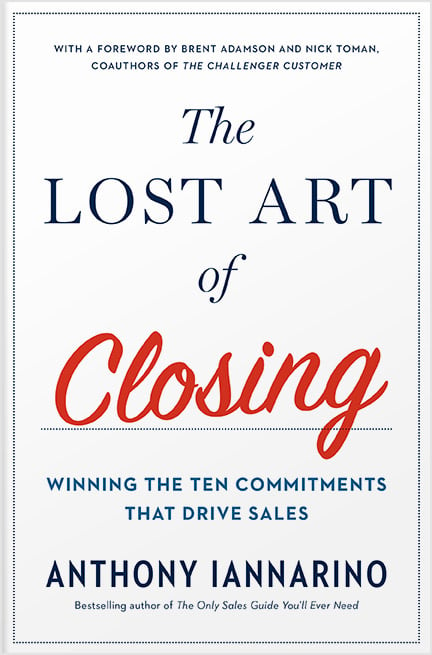For someone to sell, someone else has to buy. It is a single act with two parties. We very much like our linear processes, the sales process, or our best plan for what you need to do to create and win opportunities. Most sales processes pay little attention to the buyer’s process, neglecting factors like how compelled to change are the individual buyer’s stakeholders. The conceptualization of the buyer’s process, sometimes called the buyer’s journey, to describe the stages of another process that is portrayed as being linear. The buyer’s journey is often used to describe what a potential client needs, but takes no account of the sales process. Set aside the fact that both the sales process and buying process are mostly nonlinear, and ignore the fact they are both becoming more so in business-to-business sales. Focus instead on the potential conflicts between the two processes and the unparalleled value of negotiating the process.
Whose Process and Why
Of all of the things I have written and published, the one idea that has caused more people to retreat from a strategy while others run towards it is the idea of controlling the process. One of the dominate ideas written and promoted on Linkedin is how the balance of power has shifted from seller to buyer. Those who suggest this idea point to the proliferation of information as the root cause. They’ve stuck to the story long enough that salespeople and sales organizations have started to believe it’s true. While it’s true that there is more information available thanks to the internet, a more substantial factor in the shift would have to be the glut of suppliers and alternatives in most markets. The increase of too many suppliers competing for a finite number of prospective clients is a more plausible explanation.
The same people who suggest the balance of power has shifted would also have you believe that you should be a conflict-averse errand-person, serving your client by waiting patiently to be told what to do and when. That approach would be the opposite of serving your clients. It would be servility.
The reason the salesperson should control the process is that they have more experience in knowing what conversations their clients need to have and what commitments they need to make to get the better results they need. Even when their buyer is educated and knows what they want, and it’s impossible to know what options are available when they haven’t seen them. The salesperson is helping different companies in different verticals, learning what works and why, and discovering when it makes sense, provided their company continues to try to improve their execution and innovate.
Sell the Process
The idea that you should sell the process is so you can create some alignment between your process and your client’s process if they have a process that is something other than a formal request for proposal. In The Lost Art of Closing: Winning the Ten Commitments That Drive Sales, you will find a methodology for selling your dream client a process and negotiating the conversations about what comes next, how it creates value for your prospective client, and some language choices for acquiring commitments, including the more difficult commitments. The methodology is nonlinear, acknowledging that your contacts may need to have some conversation sooner or later in their process.No more pushy sales tactics. The Lost Art of Closing shows you how to proactively lead your customer and close your sales. 
Your linear sales process might not be an exact match for your dream client. They may need something else from you, or they may require you to accelerate some conversations and commitments and decelerate others. Your prospective client’s process may also not allow you to do your very best work for them, depriving you of the opportunity to create the most value for them and differentiate yourself and your offering in a way that would help them understand why they would prefer you over alternatives. The more you can agree on what you might do and in what order, the better you can serve your client in making the best decision.
Conflict Aversion and Creating Value
Unless you are fortunate enough for your prospective client to have a process that precisely lines up with yours, you are going to have to negotiate the process, i.e., sell the process. i.e., control the process.
There is bound to be some conflict when you try to do your best to serve your prospect, especially when they have ideas of how they want to proceed. Doing something less than selling the process will likely prevent you from creating value through the process and result in your prospect skipping conversations and commitments that would not only have served them but would have allowed you to shine.
When we speak about selling, we talk about the power of constructive tension. Most of the time, the idea is applied to introducing change and the consequences of doing nothing. That same constructive tension is as valuable—if not more valuable—when applied to the process. What makes one consultative is their ability and willingness to have difficult conversations around what their clients should or should not do. If you are willing to dole out your advice about the change you would recommend your client make, how can you be resistant to the idea that you should also provide your best guidance on the process of making a good decision?
One Process at Most
There is one process with two parties, often riddled with conflicts. If those two parties were to communicate about what each needs to do their best work and produce the best result, there might be one process. When there are two processes, the competition between the two causes both parties with a suboptimal process, the seller skipping steps because their buyer doesn’t recognize the value, or the buyer skipping steps because the salesperson is deferring to their process.
If you are going to serve your client, start by negotiating the process.








.jpg?width=768&height=994&name=salescall-planner-ebook-v3-1-cover%20(1).jpg)


